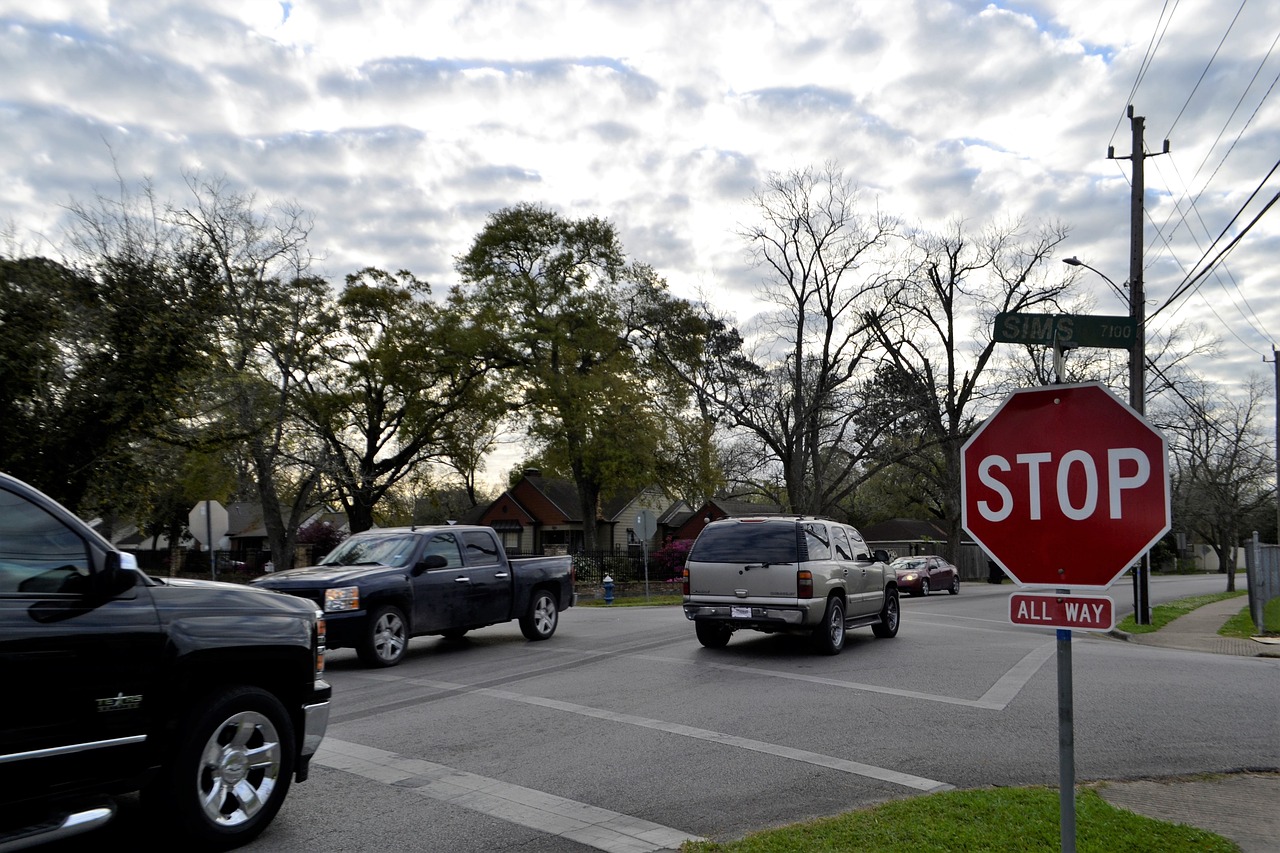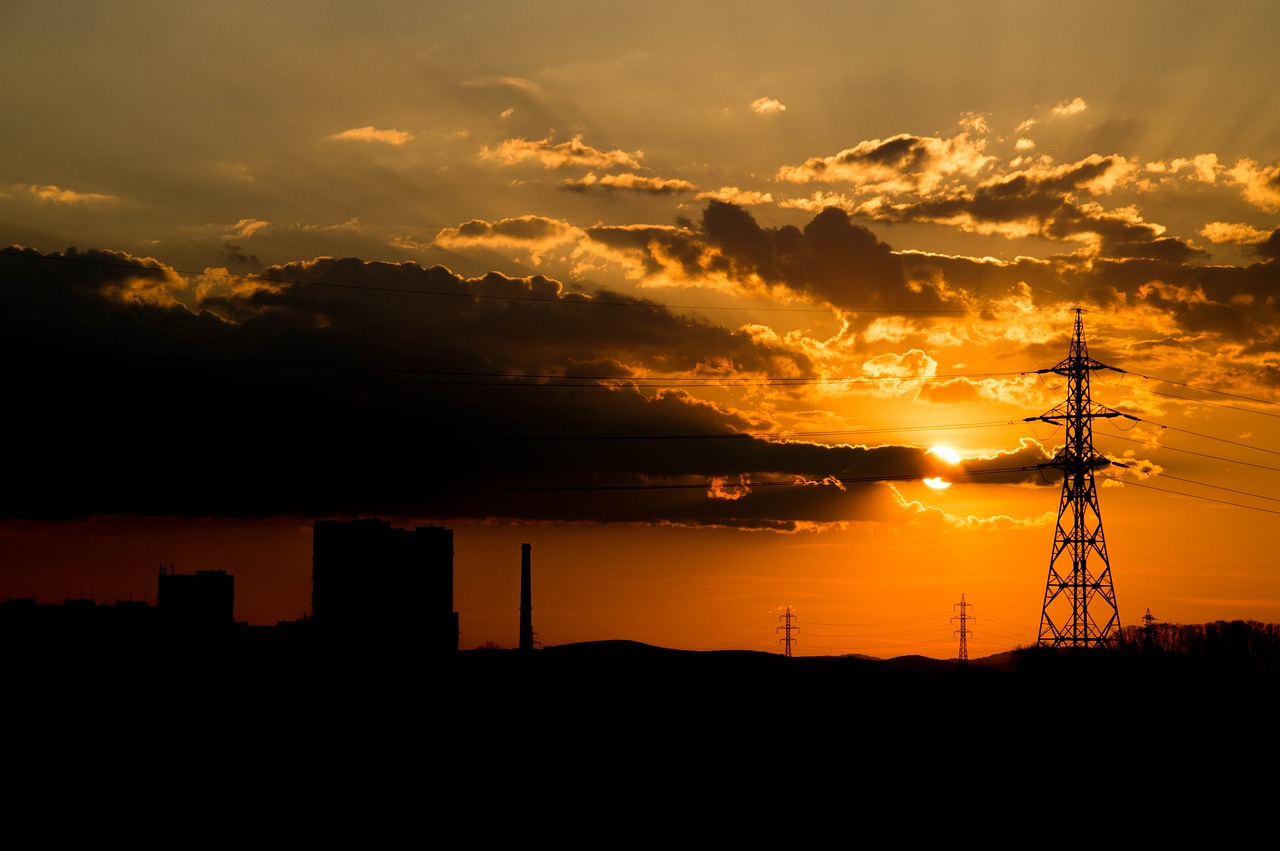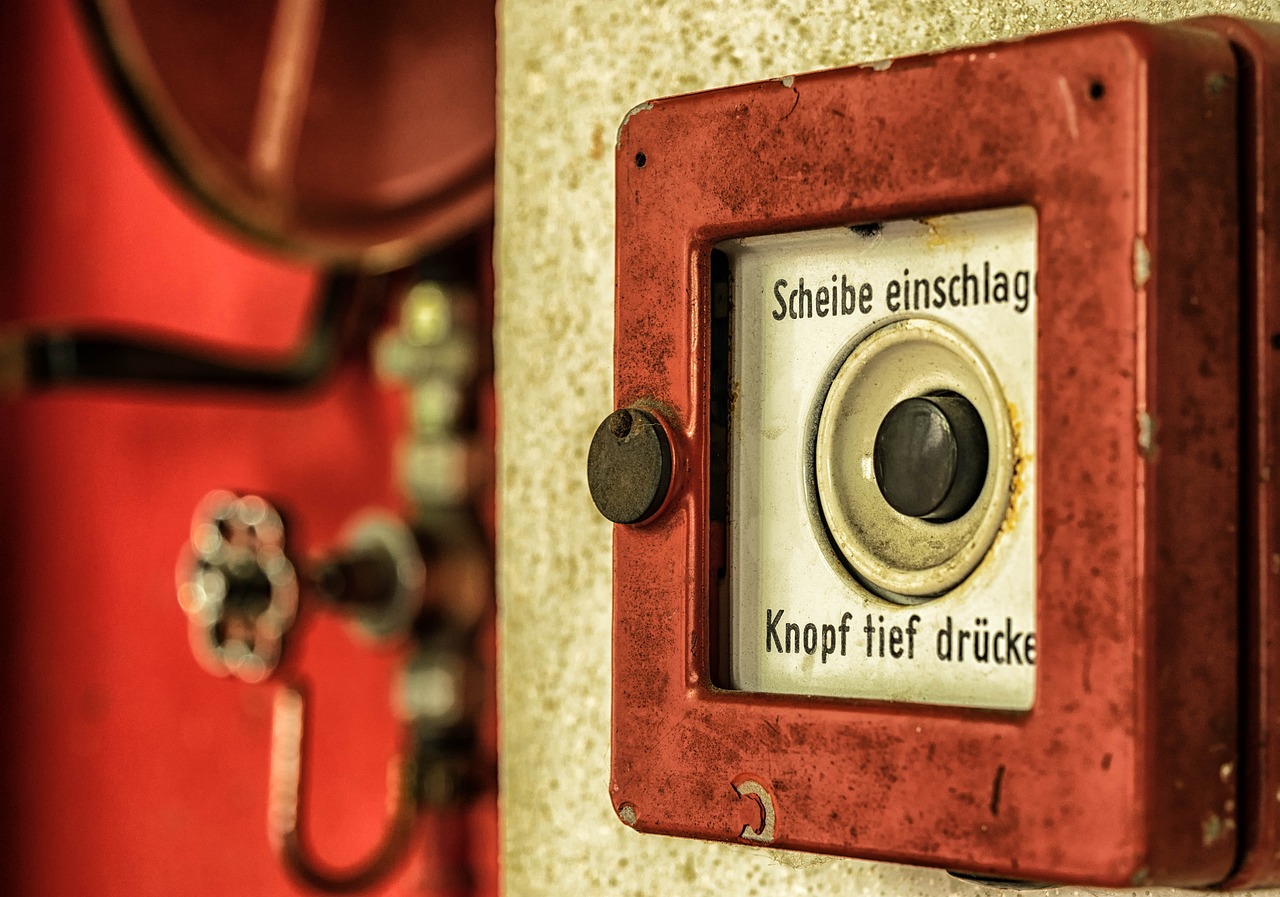Utility Safety During Natural Disasters
When it comes to natural disasters, the stakes couldn't be higher for utilities. These events, ranging from devastating hurricanes to sudden earthquakes, can disrupt essential services that communities rely on every single day. Imagine waking up to find that your electricity is out, your water supply is compromised, and communication lines are down—all because of a natural disaster. It’s a nightmare scenario that highlights the critical need for effective utility safety measures. In this article, we’ll explore the essential safety measures that utilities must implement to prepare for, respond to, and recover from these catastrophic events, ensuring public safety and minimizing service disruptions.
Understanding the unique challenges posed by different types of natural disasters is the first step. Each disaster comes with its own set of characteristics that can impact utility infrastructure. For instance, hurricanes bring high winds and flooding, while earthquakes can cause sudden ground shifts. By recognizing these differences, utilities can tailor their preparedness strategies to address specific risks. But how can utilities effectively prepare for such unpredictable events? The answer lies in comprehensive planning and a proactive approach to resilience.
Natural disasters come in various forms, including hurricanes, earthquakes, and floods. Understanding their characteristics helps utilities prepare effectively and respond promptly to protect infrastructure and ensure safety. Each type of disaster presents unique challenges that can severely impact utility operations. For example, hurricanes can lead to flooding, which may damage electrical systems, while earthquakes can disrupt gas and water lines. By mapping out these potential scenarios, utilities can develop tailored response strategies that prioritize public safety and service continuity.
Effective preparedness planning is crucial for utilities. This section discusses strategies for developing comprehensive plans that include risk assessment, resource allocation, and training for personnel to handle emergencies. A well-structured preparedness plan often includes:
- Risk Assessment: Identifying vulnerabilities within the utility infrastructure.
- Resource Allocation: Ensuring that adequate resources are available for emergency response.
- Training: Regular training sessions for staff to ensure they are well-equipped to handle emergencies.
Building resilient infrastructure is vital for utility safety. This subheading examines methods for reinforcing systems against natural disasters, including design improvements and regular maintenance to withstand extreme conditions. By investing in advanced materials and technologies, utilities can enhance the durability of their infrastructure. For instance, retrofitting older buildings to meet current seismic standards can significantly reduce the risk of damage during an earthquake. Furthermore, routine inspections and maintenance can help identify potential weaknesses before they become critical failures.
Establishing clear emergency response protocols ensures a swift and organized reaction during disasters. This section outlines key components of effective response plans, including communication strategies and coordination with local authorities. A well-defined protocol not only streamlines operations but also ensures that all team members know their roles and responsibilities. This can be likened to a well-rehearsed orchestra, where each musician plays their part to create a harmonious response to the disaster.
Effective communication with the public is essential during natural disasters. This part discusses best practices for informing communities about safety measures, service interruptions, and recovery efforts through various channels. Utilizing social media, local news outlets, and community bulletins can help disseminate information quickly. It's like having a megaphone in a crowded room; the clearer and louder the message, the more people will hear it. By keeping the community informed, utilities can foster trust and cooperation, which are vital during emergencies.
Restoration and recovery efforts are critical after a disaster. This subheading focuses on strategies for quickly restoring utility services and supporting community recovery, including damage assessment and resource mobilization. After the storm has passed, the real work begins. Utilities must prioritize restoring essential services, often working around the clock to assess damage and mobilize resources. This requires a coordinated effort, where utility teams collaborate with local governments and emergency services to ensure a smooth recovery process.
Regular training and drills for utility personnel enhance readiness for natural disasters. This section emphasizes the importance of simulations and exercises to prepare staff for real-world scenarios and improve response times. Just as athletes practice their skills to perform at their best during competitions, utility teams must engage in drills that mimic potential disaster scenarios. These exercises help identify gaps in the response plan, allowing for adjustments that can make a significant difference when a real disaster strikes.
Analyzing past disasters provides valuable insights for future preparedness. This section highlights case studies of utility responses to natural disasters, showcasing successes and areas for improvement to inform better practices. By learning from previous events, utilities can refine their strategies and enhance their resilience. For example, examining how utilities in hurricane-prone areas adapted their infrastructure can provide valuable lessons for those in regions at risk of flooding or earthquakes.
Q: What should utilities prioritize in their disaster preparedness plans?
A: Utilities should focus on risk assessment, resource allocation, and staff training to ensure a comprehensive approach to disaster readiness.
Q: How can utilities effectively communicate with the public during a disaster?
A: Utilizing multiple channels such as social media, local news, and community bulletins can help ensure that important information reaches the public quickly.
Q: Why is infrastructure resilience important?
A: Resilient infrastructure minimizes service disruptions and protects critical utility systems from damage during natural disasters.

Understanding Natural Disasters
Natural disasters are unpredictable events that can wreak havoc on communities, infrastructure, and utilities. They come in various forms, each with its own unique characteristics and potential impacts. From the fierce winds of hurricanes to the ground-shaking tremors of earthquakes, understanding these phenomena is crucial for effective utility preparedness and response. Imagine a hurricane barreling down the coast, or an earthquake shaking the very ground beneath your feet; these events can disrupt power, water, and gas services, leaving communities vulnerable.
To grasp the full scope of natural disasters, we can categorize them into several types, each presenting distinct challenges for utility providers:
- Hurricanes: These massive storm systems can cause flooding, high winds, and widespread power outages. Utilities must prepare for the potential destruction of infrastructure and the need for rapid restoration efforts.
- Earthquakes: Sudden and often devastating, earthquakes can damage pipelines and electrical systems, leading to gas leaks and power failures. The unpredictable nature of earthquakes makes preparedness all the more critical.
- Floods: Heavy rainfall or storm surges can inundate areas, affecting utility operations and infrastructure. Utilities need to assess flood risks and develop strategies for mitigating damage.
- Tornadoes: With their intense winds and destructive paths, tornadoes can obliterate utility poles and disrupt service. Quick response and recovery plans are essential to restore services.
Understanding the characteristics of these natural disasters helps utility companies formulate effective strategies for risk assessment and management. For instance, knowing the historical frequency and intensity of hurricanes in a region can guide utilities in reinforcing their infrastructure against potential storm damage. Similarly, analyzing earthquake patterns can inform the placement of critical facilities and the implementation of seismic retrofitting measures.
Moreover, the impact of natural disasters extends beyond immediate physical damage. They can strain community resources, disrupt local economies, and create long-lasting effects on public safety. Utilities play a pivotal role in community resilience, and their ability to respond effectively can significantly influence recovery times. By investing in preparedness and understanding the nuances of various natural disasters, utility providers can enhance their readiness and ensure the safety of the communities they serve.
Q1: What are the most common types of natural disasters that affect utilities?
A1: The most common types include hurricanes, earthquakes, floods, and tornadoes. Each type presents unique challenges and requires tailored preparedness strategies.
Q2: How can utilities prepare for natural disasters?
A2: Utilities can prepare by conducting risk assessments, developing comprehensive emergency response plans, and investing in infrastructure resilience through design improvements and regular maintenance.
Q3: Why is public communication important during natural disasters?
A3: Effective communication ensures that the public is informed about safety measures, service interruptions, and recovery efforts, which helps to maintain trust and safety in the community.

Preparedness Planning
When it comes to for utilities during natural disasters, the stakes couldn't be higher. Imagine a hurricane barreling down on your community, and the lights flicker, then go out. Panic sets in, and the last thing anyone wants is to be left in the dark—literally and figuratively. That's why having a comprehensive preparedness plan is not just a good idea; it's essential. This plan should cover a range of strategies designed to mitigate risks and ensure that utilities can respond effectively when disaster strikes.
First and foremost, a thorough risk assessment is necessary. Utilities must evaluate the specific threats their infrastructure faces based on geographic and environmental factors. For example, a utility company in a coastal area may prioritize hurricane preparedness, while a utility in an earthquake-prone region will need to focus on seismic resilience. By identifying these risks, utilities can allocate resources more efficiently and develop targeted strategies to address potential vulnerabilities.
Next, resource allocation plays a critical role in preparedness. This involves not only securing physical resources, like backup generators and repair equipment, but also ensuring that personnel are adequately trained and ready to act. It's crucial to have a well-defined inventory of resources and a plan for mobilizing them quickly. Imagine trying to find a needle in a haystack when your community needs immediate assistance—this is why having everything organized and accessible is key.
Training personnel is another cornerstone of effective preparedness planning. Regular training sessions and workshops can equip staff with the skills they need to handle emergencies. This can include everything from operating emergency equipment to understanding evacuation procedures. Consider conducting simulations that mimic real disaster scenarios; these exercises can help staff identify gaps in their training and improve their response times. After all, practice makes perfect, right?
Moreover, utilities should establish partnerships with local emergency services and community organizations. Collaborative efforts can enhance response capabilities and ensure that everyone is on the same page during a crisis. For instance, a utility might coordinate with fire departments and local government agencies to create a unified response plan, laying the groundwork for effective communication and action during emergencies.
Finally, it's essential to regularly review and update preparedness plans. The world is constantly changing, and new threats can emerge at any time. By keeping plans current, utilities can adapt to evolving risks and incorporate lessons learned from past disasters. This proactive approach not only enhances safety but also builds trust within the community, demonstrating that utilities are committed to keeping the lights on and the water flowing, no matter what.
In conclusion, effective preparedness planning is a multifaceted process that involves understanding risks, allocating resources, training personnel, fostering partnerships, and continuously updating strategies. By implementing these measures, utilities can significantly enhance their ability to respond to natural disasters, ensuring public safety and minimizing service disruptions. Remember, when it comes to disaster preparedness, it's better to be over-prepared than underprepared!
- What is the first step in preparedness planning for utilities?
Conducting a thorough risk assessment to identify potential threats specific to the region. - How often should preparedness plans be updated?
Regularly, ideally annually, or whenever new risks are identified or significant changes occur in the community. - Why is training personnel important?
Training ensures that staff are equipped to handle emergencies efficiently, reducing response times and improving overall safety. - What role do partnerships play in preparedness planning?
Partnerships with local emergency services enhance coordination and communication during crises, leading to more effective responses.

Infrastructure Resilience
Building resilient infrastructure is not just a buzzword; it's a lifeline during natural disasters. Think of it like fortifying a castle against invading forces. Just as a castle's walls need to be strong and well-maintained to withstand attacks, our utility systems must be designed and reinforced to endure the unpredictable forces of nature. This means investing in up-to-date technology, using high-quality materials, and implementing innovative design strategies that can stand up to hurricanes, earthquakes, floods, and other calamities.
To achieve true resilience, utilities must take a multi-faceted approach. This includes not only the physical infrastructure but also the systems and processes that support it. For instance, regular maintenance checks are akin to routine health screenings; they help identify vulnerabilities before they become critical issues. Imagine waiting until a bridge collapses before you inspect it—disastrous, right? Therefore, proactive measures are essential in ensuring that our infrastructure remains robust.
One effective method for enhancing infrastructure resilience is through design improvements. For example, elevating electrical substations in flood-prone areas can prevent water damage that leads to prolonged outages. Similarly, using flexible materials in construction can help structures absorb shocks during earthquakes, reducing the risk of catastrophic failure. This forward-thinking design philosophy is crucial as we face increasingly severe weather patterns attributed to climate change.
Moreover, utilities should consider implementing redundancy systems. Just like having a backup generator at home, these systems ensure that if one part of the infrastructure fails, others can take over. For example, a water utility might install multiple pipelines to deliver water from different sources. This way, if one pipeline is compromised, others can still deliver essential services to the community. Redundancy is a vital safety net that can significantly minimize service disruptions during disasters.
In addition to physical improvements, there’s also a human element to consider. Training personnel on how to manage and maintain these resilient systems is crucial. Regular workshops and educational programs can help staff understand the importance of infrastructure resilience and provide them with the skills needed to respond effectively when disaster strikes. Imagine a well-rehearsed orchestra playing a symphony; each musician knows their role, and together they create harmony even in chaos.
Finally, collaboration is key. Utilities should engage with local governments, emergency services, and community organizations to share knowledge and resources. This collective effort can lead to comprehensive resilience strategies that benefit everyone. After all, it takes a village to prepare for a storm, and by working together, we can build an infrastructure that not only survives but thrives in the face of adversity.
- What is infrastructure resilience? Infrastructure resilience refers to the ability of utility systems to withstand and recover from natural disasters while continuing to provide essential services.
- How can utilities improve their infrastructure? Utilities can improve their infrastructure through design enhancements, regular maintenance, implementing redundancy systems, and investing in new technologies.
- Why is training important for personnel? Training ensures that utility staff are well-prepared to handle emergencies effectively, minimizing response times and improving overall safety.
- What role does community collaboration play? Community collaboration helps utilities share resources and knowledge, leading to more effective disaster preparedness and recovery strategies.

Emergency Response Protocols
When disaster strikes, having well-defined is like having a lifeline in turbulent waters. These protocols serve as a roadmap, guiding utility companies through the chaos of natural disasters. Imagine a well-orchestrated dance where every participant knows their role; that’s what effective emergency response looks like. It’s not just about reacting; it’s about being prepared to act swiftly and efficiently to minimize damage and ensure public safety.
First and foremost, clear communication is crucial during emergencies. Utility companies must establish communication strategies that allow for rapid dissemination of information to both staff and the public. This includes using various channels such as social media, local news outlets, and community alert systems to keep everyone informed. For instance, during a hurricane, timely updates about service interruptions and safety measures can significantly reduce panic and confusion. Here’s a quick look at some effective communication methods:
| Communication Method | Benefits |
|---|---|
| Social Media | Real-time updates and wide reach |
| Text Alerts | Direct communication with customers |
| Local News | Credible information source |
| Community Meetings | Face-to-face interaction and reassurance |
A significant component of emergency response is the coordination with local authorities and other emergency services. It’s like a well-rehearsed symphony where different instruments come together to create harmony. Utility companies should have established contacts with local government agencies, fire departments, and emergency medical services. This collaboration ensures that all entities are on the same page, sharing resources and information to tackle the crisis effectively.
Moreover, developing a comprehensive emergency response plan is essential. This plan should detail the roles and responsibilities of each team member, ensuring that everyone knows what to do when disaster strikes. It’s akin to having a playbook for a sports team; everyone must know their position to win the game. Key components of an effective emergency response plan include:
- Risk Assessment: Identifying potential risks and vulnerabilities within the utility infrastructure.
- Resource Allocation: Ensuring that necessary tools, equipment, and personnel are ready to deploy at a moment's notice.
- Training and Drills: Regularly scheduled drills to simulate emergency situations, helping staff to practice their responses.
Finally, it’s essential to have a post-disaster evaluation mechanism in place. After the dust settles, reviewing the response can provide invaluable insights into what worked well and what needs improvement. This reflection is critical for continuous improvement, ensuring that utility companies learn from each experience and enhance their protocols for future emergencies.
In conclusion, emergency response protocols are not just a set of guidelines; they are a lifeline that can save lives and restore communities. By prioritizing clear communication, collaboration with local authorities, and continuous evaluation, utility companies can navigate the storm of natural disasters with confidence and efficiency.
Q: What should I do if my utility service is interrupted during a disaster?
A: Stay informed through official communication channels, such as your utility company’s website or social media. Report the outage if it hasn’t been acknowledged, and follow safety guidelines until services are restored.
Q: How can I prepare for potential utility service disruptions?
A: Create an emergency kit that includes essentials such as water, non-perishable food, flashlights, batteries, and a first-aid kit. Additionally, have a backup plan for heating or cooling your home during outages.
Q: How do utility companies ensure their infrastructure is resilient?
A: Utility companies conduct regular assessments and maintenance, invest in modern technology, and implement best practices for infrastructure design to withstand extreme weather conditions and natural disasters.

Public Safety Communication
When disaster strikes, the chaos can be overwhelming, and that’s precisely why effective communication becomes a lifeline for communities. Imagine a hurricane barreling down on your town; the last thing you want is to be left in the dark about safety measures or service interruptions. Utilities play a crucial role in disseminating information that can mean the difference between safety and danger. So, how can these organizations ensure they’re reaching the public effectively?
First and foremost, it’s essential to establish a multi-channel communication strategy. Relying on a single method, like social media, can leave many people uninformed. Instead, utilities should utilize a combination of traditional media (like radio and television), digital platforms (such as websites and social media), and even direct communication methods (like text alerts and community meetings). This way, they can ensure that their messages reach a diverse audience, catering to different preferences and accessibility needs.
Another key aspect of communication is clarity. During a crisis, people are often anxious and overwhelmed, making it crucial that information is presented in a straightforward manner. Clear, concise messages help prevent misunderstandings. For instance, when announcing service outages, it’s vital to specify the affected areas, the expected duration of the outage, and what steps residents should take in the meantime. A well-structured message can include:
- What happened: Briefly explain the situation.
- What to expect: Detail any service interruptions or changes.
- What to do: Provide clear instructions for safety.
Moreover, timing is everything. Information should be disseminated as soon as possible—before the disaster hits, during the event, and in the aftermath. Utilities can prepare pre-written messages that can be quickly shared, ensuring that they are ready to respond without delay. This proactive approach not only keeps the public informed but also builds trust within the community.
Additionally, it’s important to engage with the community. Feedback mechanisms, such as surveys or social media interactions, can help utilities understand the effectiveness of their communication strategies. This two-way dialogue not only helps to refine communication efforts but also fosters a sense of community involvement and reassurance during tough times.
Finally, training utility personnel in crisis communication is essential. Staff should be well-versed in how to convey information clearly and empathetically. Regular training sessions and simulations can prepare them to handle real-life scenarios efficiently. After all, when the pressure is on, having a team that knows how to communicate can make a significant difference in public safety.
| Question | Answer |
|---|---|
| How do utilities communicate during a disaster? | Utilities use a combination of social media, traditional media, text alerts, and community meetings to reach the public. |
| What should I do if I don’t receive updates? | Check the utility's website, social media pages, or contact customer service for the latest information. |
| What information should utilities provide during a disaster? | They should inform the public about what happened, what to expect, and what actions to take for safety. |
| How can I provide feedback to my utility company? | Utilities often have feedback forms on their websites or social media pages where you can share your thoughts. |

Restoration and Recovery
Restoration and recovery are not just buzzwords; they are critical phases that follow a natural disaster. Imagine a community hit by a devastating hurricane. The winds howl, the waters rise, and suddenly, life as we know it comes to a screeching halt. After the storm passes, the real work begins. It's during these moments that utility companies must spring into action to restore services and help communities heal. This process involves a series of well-coordinated steps designed to bring back power, water, and gas services while ensuring the safety of both workers and residents.
First and foremost, the assessment of damage is paramount. Utility teams must conduct thorough inspections of infrastructure to determine the extent of destruction. This includes checking power lines, substations, water pipes, and gas mains. The quicker this assessment happens, the faster restoration efforts can begin. In many cases, utilities deploy drones or specialized teams to survey hard-to-reach areas, ensuring that no damage goes unnoticed. This proactive approach not only speeds up recovery but also helps in prioritizing the most critical areas that need immediate attention.
Once the damage is assessed, the next step is mobilizing resources. This involves gathering materials, tools, and personnel needed for repairs. Utility companies often have pre-established agreements with suppliers to ensure that essential materials are available during emergencies. For instance, if a region frequently experiences flooding, utility companies might stockpile sandbags and water pumps in advance. This foresight can make all the difference when disaster strikes.
Moreover, communication plays a crucial role during the restoration phase. Utility companies must keep the public informed about service interruptions and estimated restoration times. Utilizing various channels, such as social media, local news outlets, and community bulletin boards, can help disseminate information quickly. Imagine being in a blackout during a storm; wouldn’t you want to know when the lights will come back on? Keeping the community in the loop can alleviate anxiety and foster a sense of cooperation between the utility and its customers.
| Step | Description |
|---|---|
| Damage Assessment | Conduct thorough inspections to evaluate the extent of damage to infrastructure. |
| Resource Mobilization | Gather necessary materials and personnel for repairs. |
| Public Communication | Keep the community informed about service interruptions and restoration timelines. |
| Restoration Operations | Execute repairs and restore services systematically, prioritizing critical areas. |
| Post-Restoration Review | Evaluate the restoration process and identify areas for improvement. |
As utility companies work tirelessly to restore services, the importance of a post-restoration review cannot be overstated. After the dust settles, it's essential to analyze what worked and what didn’t during the recovery phase. This reflection helps in refining future strategies, ensuring that the next response is even more efficient. Lessons learned from past experiences can lead to improvements in training and preparedness, ultimately saving time and resources in future disasters.
In conclusion, the restoration and recovery phase is a complex yet vital part of disaster management for utilities. It requires a blend of rapid response, effective communication, and continuous improvement. By focusing on these aspects, utility companies can not only restore services swiftly but also strengthen their relationship with the communities they serve. After all, in the aftermath of a disaster, the community's resilience is often intertwined with the reliability of its utilities.
- What is the first step utilities take after a disaster?
Utilities typically begin with a damage assessment to understand the extent of the impact on their infrastructure. - How do utilities communicate with the public during restoration?
They use various channels such as social media, local news, and community announcements to keep everyone informed. - What role do training and drills play in restoration efforts?
Regular training and drills prepare utility personnel for real-world scenarios, enhancing their response times and effectiveness during disasters. - Why is a post-restoration review important?
A post-restoration review helps identify successes and areas for improvement, leading to better preparedness for future events.

Training and Drills
When it comes to ensuring utility safety during natural disasters, are not just optional; they are absolutely essential. Imagine a firefighter rushing into a burning building without ever having practiced how to handle a fire. Sounds reckless, right? The same principle applies to utility personnel who must be prepared to face the unpredictable nature of disasters like hurricanes, earthquakes, or floods. Regular training sessions and realistic drills can make the difference between chaos and effective response during emergencies.
First and foremost, these training programs should be comprehensive and tailored to the specific needs of the utility. They should cover not only the technical skills required to operate equipment safely but also the soft skills necessary for effective communication and teamwork. After all, when disaster strikes, it's not just about fixing broken lines or restoring power; it's about working together as a cohesive unit to ensure public safety. For example, a well-prepared team can quickly assess the situation, prioritize tasks, and mobilize resources efficiently, reducing downtime and minimizing risks to the community.
Moreover, conducting regular drills simulates real-life scenarios that utility workers may encounter during a disaster. These drills can range from tabletop exercises, where teams discuss their response to hypothetical situations, to full-scale simulations that mimic actual disaster conditions. Such practice helps identify potential weaknesses in protocols and allows teams to refine their strategies. It's like rehearsing for a play; the more you practice, the better you perform when the curtain goes up.
To illustrate the importance of training and drills, consider the following table that outlines key components of an effective training program:
| Training Component | Description |
|---|---|
| Risk Assessment | Identifying potential risks specific to the region and utility operations. |
| Technical Skills | Hands-on training in operating and repairing equipment safely. |
| Emergency Protocols | Understanding and practicing emergency response procedures. |
| Communication | Training on effective communication strategies during crises. |
| Teamwork Exercises | Activities that promote collaboration and trust among team members. |
In addition to structured training programs, it’s crucial to foster a culture of continuous learning within utility organizations. This can be achieved through workshops, seminars, and even inviting experts to share their insights on disaster response. By staying updated on the latest technologies and methodologies, utility workers can enhance their readiness for any situation that may arise.
Finally, feedback from training and drills plays a vital role in improving future preparedness. After each drill, teams should conduct a debriefing session to discuss what went well and what could be improved. This reflective practice not only empowers staff but also ensures that lessons learned are integrated into future training sessions. Think of it as a sports team reviewing game footage to identify strengths and weaknesses; it’s all about getting better with each play.
- How often should utility personnel undergo training? Regular training should occur at least twice a year, with drills conducted more frequently to keep skills sharp.
- What types of drills are most effective? A combination of tabletop exercises and full-scale simulations is recommended to cover various scenarios.
- How can feedback from drills be incorporated? Debriefing sessions after each drill allow teams to discuss improvements and update protocols accordingly.

Case Studies and Lessons Learned
When it comes to utility safety during natural disasters, analyzing past events can be a treasure trove of knowledge. Each disaster tells a story, revealing both triumphs and pitfalls in the response efforts of utilities. For instance, let's take a look at Hurricane Sandy in 2012. This storm wreaked havoc across the East Coast of the United States, causing widespread damage and power outages. Utilities faced significant challenges in restoring services, but their experiences led to some valuable lessons.
One major takeaway from Hurricane Sandy was the importance of preemptive communication. Utilities that had established clear communication channels with their customers prior to the storm were able to provide timely updates on service interruptions and restoration efforts. This transparency helped to alleviate public anxiety and fostered a sense of trust in the utility providers. In contrast, those that struggled with communication faced backlash and frustration from their customers.
Another notable case is the response to the 2011 earthquake and tsunami in Japan. The disaster not only tested the resilience of utility infrastructure but also highlighted the need for robust emergency response protocols. Utilities that had conducted regular drills and training were significantly more effective in their response efforts. They quickly mobilized resources, assessed damage, and prioritized restoration efforts, minimizing downtime for affected communities.
To further illustrate the importance of learning from past disasters, we can summarize some key lessons in the table below:
| Disaster | Key Lesson | Utility Response Improvement |
|---|---|---|
| Hurricane Sandy (2012) | Preemptive Communication | Established clear channels for updates and customer engagement |
| Japan Earthquake & Tsunami (2011) | Regular Training and Drills | Enhanced emergency protocols and rapid resource mobilization |
| Hurricane Katrina (2005) | Infrastructure Resilience | Investments in stronger and more adaptable systems |
Each of these case studies underscores the necessity for utilities to not only react to disasters but to learn and evolve from them. By studying the successes and failures of past responses, utilities can develop more effective preparedness strategies that enhance public safety and service reliability. It's not just about surviving the storm; it's about thriving in the aftermath.
As we reflect on these lessons, it’s also crucial to consider the role of technology in improving utility responses. Innovations such as real-time data analytics and advanced communication systems can significantly enhance a utility's ability to respond swiftly and efficiently. The future of utility safety lies not only in learning from the past but also in embracing the tools that can help us navigate the challenges of tomorrow.
- What are the most common natural disasters affecting utilities? Utilities often face challenges from hurricanes, earthquakes, floods, and wildfires, each requiring different preparedness strategies.
- How can utilities improve their communication during disasters? Establishing clear communication protocols before a disaster strikes, including social media updates and emergency alerts, can enhance public trust and information dissemination.
- Why is infrastructure resilience important? Resilient infrastructure helps utilities withstand and recover from natural disasters more effectively, minimizing service interruptions and ensuring public safety.
Frequently Asked Questions
- What are the most common types of natural disasters that affect utilities?
Utilities often face challenges from various natural disasters such as hurricanes, earthquakes, floods, and wildfires. Each type of disaster has unique characteristics that require tailored preparedness strategies to protect infrastructure and ensure public safety.
- How can utilities prepare for natural disasters?
Effective preparedness involves developing comprehensive plans that include risk assessments, resource allocation, and personnel training. Regular updates to these plans are essential to adapt to changing conditions and improve response capabilities.
- What measures can be taken to enhance infrastructure resilience?
Utilities can enhance resilience by reinforcing their infrastructure through design improvements, implementing robust maintenance schedules, and investing in technology that can withstand extreme weather conditions. This proactive approach minimizes damage during disasters.
- What are the key components of emergency response protocols?
Clear communication strategies, coordination with local authorities, and defined roles for personnel are critical components of effective emergency response protocols. These elements ensure that utilities can respond swiftly and efficiently during a disaster.
- How should utilities communicate with the public during a disaster?
Utilities should use multiple channels to inform the public about safety measures, service interruptions, and recovery efforts. This includes social media, local news outlets, and direct notifications to ensure the community is well-informed.
- What steps are involved in restoration and recovery after a disaster?
Restoration and recovery involve assessing damage, mobilizing resources, and prioritizing service restoration based on community needs. Quick and efficient recovery efforts are vital to support the affected community and restore normalcy.
- Why are training and drills important for utility personnel?
Regular training and drills prepare utility personnel for real-world scenarios, enhance their readiness, and improve response times. Simulations help staff practice their roles, ensuring that everyone knows what to do when a disaster strikes.
- How can case studies of past disasters improve future preparedness?
Analyzing past disasters provides valuable insights into what worked and what didn’t. By learning from successes and failures, utilities can refine their strategies and implement best practices to better prepare for future events.



















